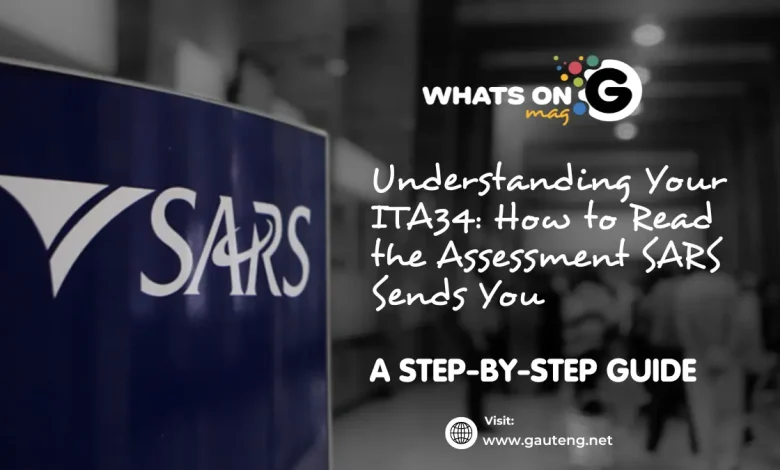Understanding Your ITA34: How to Read the Assessment SARS Sends You

Receiving an ITA34 from the South African Revenue Service (SARS) can feel overwhelming, especially if you are not familiar with tax documents. However, understanding this assessment is crucial for managing your tax affairs and ensuring compliance. This guide will walk you through the key sections of your ITA34, explain what each part means, and show you how to respond if you spot any errors.

ALSO READ: Tax Terms Explained: IRP5, ITA34, ITR12, and More in Plain English
What Is an ITA34?
An ITA34 is a formal notice SARS sends after processing your tax return. It shows the outcome of their assessment, including any adjustments, refunds, or amounts you may owe. Essentially, it tells you whether SARS agrees with the figures you submitted or if they have made changes based on their own review. You should always review your ITA34 carefully, as it forms the basis for any further action you need to take with SARS.
Key Sections of Your ITA34
When you open your ITA34, you will see several important sections. At the top, you will find your personal details, such as your name, tax reference number, and the year of assessment. Make sure this information is correct to avoid any confusion. Next, you will see a summary of your income, deductions, and the tax calculated. This section highlights any changes SARS made to your original return.
Further down, the document lists specific line items, such as employment income, business income, medical expenses, and retirement fund contributions. Each line shows the amount you declared and any adjustments SARS made. If SARS disagrees with your figures, they will state their revised amounts here. Always compare these numbers with your own records to spot any discrepancies.
Understanding SARS Adjustments
SARS may adjust your return for various reasons. For example, they might disallow certain deductions if you did not provide sufficient proof, or they could add income if they find discrepancies in your declarations. These adjustments will appear clearly in your ITA34, often with a brief explanation. If you do not understand why SARS made a change, you can contact them for clarification.
Sometimes, SARS may request additional documents to support your claims. In such cases, the ITA34 will include instructions on what to submit and by when. Responding promptly is essential to avoid penalties or further delays in your assessment.
What to Do If You Disagree
If you believe SARS made a mistake, you have the right to object. The ITA34 will explain how to lodge an objection, including the deadline and the required steps. You will need to provide supporting documents and a clear explanation of why you disagree with the assessment. Acting quickly is important, as missing the deadline could mean you lose the chance to dispute the outcome.
On the other hand, if you agree with the assessment, you may need to pay any outstanding tax or wait for a refund. The ITA34 will show the final amount due or refundable, along with payment instructions. Make sure you follow these instructions to stay compliant and avoid interest or penalties.
Tips for Managing Your ITA34
To make the process smoother, keep all your tax records organized throughout the year. This way, you can easily compare your documents with the ITA34 when it arrives. If you use a tax practitioner, review the assessment together to ensure nothing is missed. Staying informed and proactive helps you avoid surprises and maintain a good relationship with SARS.
Regularly checking your eFiling profile is also a good habit, as SARS often uploads important documents and messages there. If you have questions, the SARS contact centre or your nearest branch can provide guidance. Remember, understanding your ITA34 empowers you to take control of your tax affairs and resolve issues quickly.
Your ITA34 is a vital document in your tax journey. By learning how to read it, you can spot errors, understand SARS’s decisions, and take the right steps to protect your interests. Whether you agree with the assessment or need to dispute it, knowing what to look for puts you in a stronger position. Stay organized, ask questions when in doubt, and respond promptly to keep your tax matters in order.




